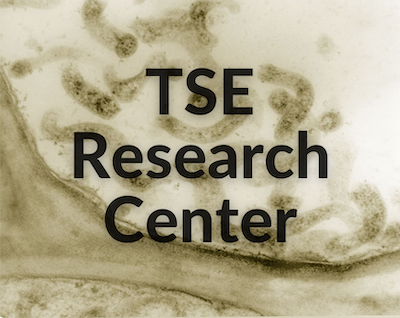The current belief is that chronic wasting disease (CWD) and other fatal transmissible spongiform encephalopathies (TSEs) are caused by a misfolded protein called a prion. However, there is no solid evidence to support this theory.
Our laboratory has found that a spiral-shaped bacterium called Spiroplasma is present in 100% of TSE samples. This bacterium has the same biological properties as the TSE transmissible agent. We believe that Spiroplasma is the cause of CWD and other TSEs.
We are developing a diagnostic test for CWD based on this bacterium. This test will be a valuable tool for early detection and prevention of CWD.
BACKGROUND: The background information on chronic wasting disease (CWD) and other fatal transmissible spongiform encephalopathies (TSE) as presented on the internet is confusing since certain assumptions are made that in my mind are erroneous. The current dogma is that CWD and the other TSEs are caused by a replicating protein (prion amyloid) and may occur by spontaneous generation. Both of these concepts are in deference to the well-accepted germ theory of Pasteur wherein a pathogen must have DNA or RNA nucleic acids to proliferate. The prion theory was made in 1981 on the basis that the misfolded prion amyloid protein was deposited in the tissues through the course of the infection and became the diagnostic marker of TSE infection. However, there is no solid data supporting the proposed mechanism of prion amyloid proliferation and in my opinion, much of the support of the prion theory is speculative. In fact, Dr. Laura Manuelidis at Yale has shown by careful experimentation over the past two decades that the prion protein amyloid can be separated from infectivity. The prion theory was proposed on the basis that this disease-associated protein is the likely the causal agent since the biological characteristics of the infectious agent/s of TSE show extreme biological properties including survival after boiling, autoclaving, radiation treatment and exposure to formaldehyde or glutaraldehyde. However, there is a whole group of extremely resistant microorganisms called Archaea that show these extreme biological properties. The archaea were not widely known when the prion theory was proposed. Our laboratory has shown that an extreme thermoacidophilic bacterium that is spiral in shape and has identical biological properties as the TSE transmissible agent. Our laboratory has shown over the past five decades morphological and molecular evidence that a novel Spiroplasma sp. is involved in the pathogenesis of TSEs. Since we can isolate this bacterium from 100% of TSE samples, we propose that this consistent association with TSE infection can be the basis for development of a live test for CWD.
STRATEGY FOR THE MAKING OF A LIVE DIAGNOSTIC TEST FOR CWD: Our approach to develop a live test is based upon addressing one of the biomarkers of TSE infection. There are three biomarkers to consider. The prion amyloid that accumulates in the TSE-affected tissues during the clinical course of the disease is a reliable postmortem biomarker for TSE infection. However, there have been problems in development of a live test based upon the prion. The current efforts involve the Quaking test wherein the test sample is mixed with normal tissues then exposing to severe shaking. Positive cases show an increase in prion amyloid while there is no increase in infectivity. Control samples have been positive. Advocates of the quaking test claim a 70% accuracy, while other users have experienced only 50% reliability. The quaking test is currently used for the diagnosis of CJD, although resulting in numerous false positives. Nonetheless, the USDA has adopted this test and are funding efforts to improve the reliability of the test. A live diagnostic test detecting prion deposits in rectal tissues has been only 63% reliable. The second biomarker is scrapie-associated fibrils (SAF). SAF are found in 100% of TSE cases and are absent in control tissues. Detection of SAF is impractical for a workable diagnostic test since it’s detection requires ultracentrifugation of disrupted TSE-affected tissues and use of negative stain electron microscopy to demonstrate the unique fibril proteins. We are focusing on a third biomarker which is a novel cell-wall-less bacterium. We have abundant evidence showing the association of a novel Spiroplasma sp. with the TSEs. Our laboratory has demonstrated the presence of these tiny wall-less bacteria in TSE-affected tissues by electron
microscopy (EM) and molecular studies. We have had a major breakthrough wherein we have cultured a unique Spiroplasma sp. from CWD and CJD-affected brain and lymph node tissue 100% of the time. We have shown that these unique bacterial isolates have identical extreme biological properties as shown for the transmissible TSE agent/s. It is noteworthy that the SAF marker for TSE infection are identical by negative stain electron microscopy compared to the internal fibril proteins in Spiroplasma spp. which are involved in the motility of the organism. That data is presented on a WEB site [TSE Research Center]. Therefore, we have undertaken to develop a diagnostic test/s for CWD and other TSEs based upon the clear association of this novel extreme thermoacidophilic bacterium with these fatal encephalopathies of man and animals. We are using the CWD spiroplasma isolate along with sera from positive animals in collaboration with a reference laboratory specialized in developing diagnostic tests to develop a workable ELISA test for screening deer and elk farms, and a lateral flow instant test for hunters to be used in the field. When available these diagnostic tests will be validated in an animal model of experimental TSE infection and in collaboration with deer and elk breeders.
By Frank O. Bastian, M.D.
Research Professor Tulane Medical University and University of New Orleans

